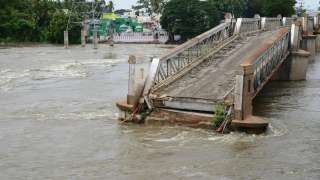MEDIA
India needs robust flood management policy
www.thehindubusinessline.com | August 17, 2022
Apart from the rising death toll, crop and infrastructure damage has risen over the years
This year, the heavy rainfall has caused devastating floods in several States, resulting in more than 1,439 lives being lost, 365,770 houses being damaged, and crop damage in 307 districts, per data from the Disaster Management Division, Ministry of Home Affairs.
Assam, Gujarat, Himachal Pradesh, Madhya Pradesh, Maharashtra, and Bihar have been badly impacted. The highest number of casualties, of around 241, was in Himachal Pradesh, followed by Assam (199), Madhya Pradesh (188), Gujarat (124), and Maharashtra (118).
India’s rapidly altering geo-climatic and socio-economic conditions are among the major causes of increasing frequency and flood-related damage in States. Furthermore, rapid urbanisation, deforestation, higher population growth, irregular rainfall, and the vast network of rivers are among the major factors resulting in floods in India.
Floods pose a serious threat to the economy, endangering the livelihood of poor rural households and mounting damage to public and private properties. According to the Global Climate Risk Index 2021, India was the seventh worst hit country in 2019 due to extreme weather-related events.
Floods are the most recurrent phenomena in India after cyclones and are amongst India’s most lethal and costly disasters. In 1980, Rashtriya Barh Ayog (RBA) estimated 40 million hectares (mha) of land as flood-prone, which has increased by around 14 per cent to 45.64 mha (Eleventh Plan Working Group on Water 2011, estimates).
The increase in flood-prone area has caused infrastructure damage and claimed numerous lives. According to the Central Water Commission Report 2022, death from floods increased from 37 in 1953 to 1,815 in 2020.
In addition, the loss due to floods also increased sharply, from ₹52.4 crore to ₹21,189.2 crore during the same period. Overall, 1,13,943 people have been killed, and 2,198.78 million people have been affected due to floods.
The economic losses stood at ₹4,37,149.7 crore, while losses on account of damage to crops and public infrastructure stood at ₹1,31,462 crore and ₹2,34,149 crore, respectively. On an average, the Indian economy’s annual loss due to floods was ₹6,428.67 crore.
The damages and casualties from floods are rising at a staggering pace due to rapid climate changes. Frequent floods have an adverse impact on the economic development of the country as well.
Parida et al (2020) highlighted that India lost around 0.46 per cent of GDP yearly due to floods. Damage to crops has been estimated to account for around 0.18 per cent of GDP, while that of public utilities and houses at 0.21 per cent and 0.07 per cent, respectively.
In addition, another adverse impact of floods is the disproportional rise in the fiscal burden of the Central and State governments, through spending on disaster management activities.
Impact on employment
Floods not only destroy standing crops and physical infrastructure like roads, bridges, rails, etc., but also have an adverse impact on the employment opportunities in the rural areas, thus hastening inequalities, poverty and food shortages due to crop damage and loss of livelihoods.
Similarly, urban flooding has become a common threat to city dwellers due to poor town planning and a dearth of investments in infrastructure.
As the problem of urban flooding is becoming more severe, and losses are increasing each year, the issue merits concerted attention from policymakers with appropriate implementation of the NDMA guidelines on Urban Flooding 2010.
Strict implementation of the Coastal Regulation Zone (CRZ) notification — which was issued in 1991 and subsequently revised in 2011 and 2019 with the primary intention to address coastal zone management issues — is the need of the hour to tackle the situation.
Worryingly, over the years, the National Flood Commission recommendations have failed to achieve much success in mitigating floods, and the data show that flood damage and fatalities have only increased years.
To mitigate the impact of floods, better disaster management policies such as greater spending on building flood-resilient infrastructure, improved flood warning systems, and for creating community awareness programmes.
In addition, the construction of flood shelters in coastal districts, improving river connectivity, construction of river embankments, and providing pucca houses to poor households in low-lying areas will be salutary.
A National Disaster Database, too, will help policymakers and academics devise long-term flood management policies.
(Source:- https://www.thehindubusinessline.com/opinion/india-needs-robust-flood-management-policy/article65780546.ece )

